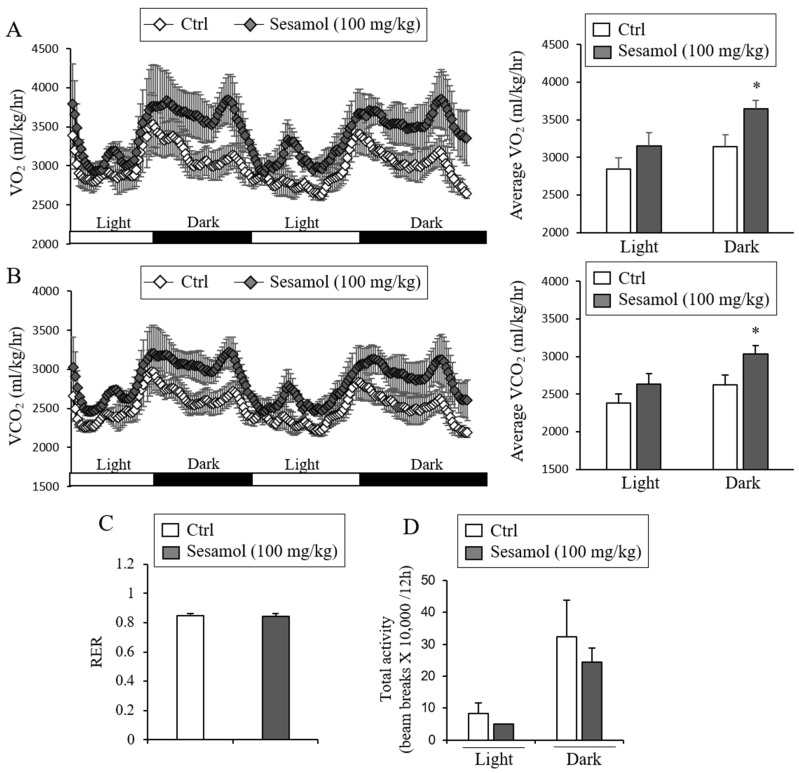Figure 4.
Oral administration of sesamol increases energy expenditure in mice. (A, B) Energy expenditure was evaluated by measurement of oxygen consumption and carbon dioxide production. O2 consumption (A) and CO2 production rates (B) of control- and sesamol-treated mice (100 mg/kg) were measured by indirect calorimetry using CLAMS after 3 weeks on the HFD (n = 5 per group). Energy expenditure was measured at 3 weeks of treatments when body weights did not start to diverge. Bar graph (right panel) represents the average of O2 consumption or CO2 production in each group. (C) Respiratory exchange ratio (RER) of the control- and sesamol-treated mice (n = 5 per group). (D) Total physical activities of control- and sesamol-treated mice (n = 5 per group). Data represent mean ± s.e.m. and statistically significant differences between the control- and sesamol-treated mice were determined by Student’s t-test (* p < 0.05).

